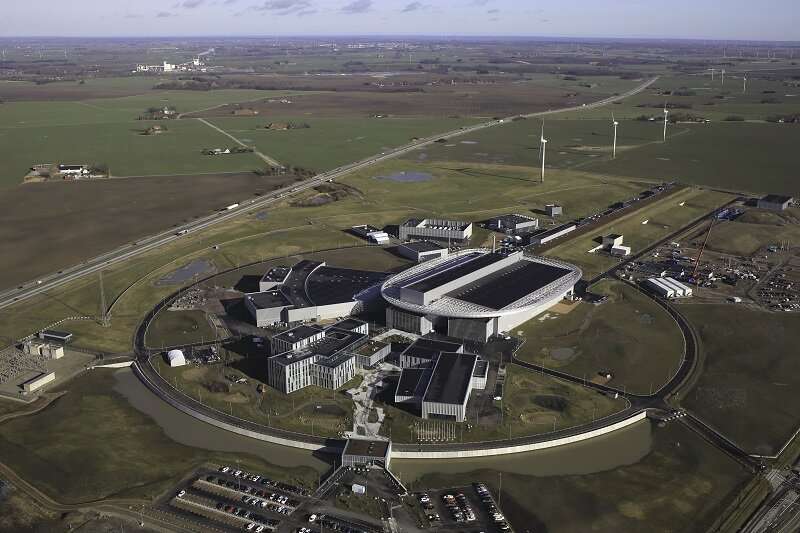This article has been reviewed according to Science X's editorial process and policies. Editors have highlighted the following attributes while ensuring the content's credibility:
fact-checked
trusted source
proofread
How the humble neutron can help solve some of the universe's deepest mysteries

Scientists are unleashing the power of neutrons to improve understanding of everyday materials and tackle fundamental questions in physics.
Apart from flashbacks that the hit Netflix series "Breaking Bad" may have conjured up, most of us have likely happily forgotten what we learned in chemistry classes back in school.
So here's a quick brush-up: chemistry looks at the building blocks of our physical world, such as atoms, and the changes they undergo. An atom consists of a nucleus of protons and neutrons surrounded by a cloud of electrons.
Free the neutrons
Now for something high school chemistry might not have taught us: the humble neutron, found in the nucleus of every atom but hydrogen, can—if manipulated in just the right way—shed light on everything from the climate crisis and energy, to health and quantum computing.
One such way is a rather spectacular process known as spallation, high-energy particles destabilize an atom's nucleus, which in turn releases some of the neutrons found there.
When harnessed, these newly freed neutrons can be used like X-rays to map the inner structure of materials.
Currently under construction in Lund, Sweden, the European Spallation Source (ESS) is expected to come online in 2027. Once it achieves its full specifications, its unprecedented flux and spectral range is set to make it the most powerful and versatile neutron source for science in the world.
The purpose of the facility, said Jimmy Binderup Andersen, head of innovation and industry at the ESS, "is to create neutrons, a neutron beam, to be used for scientific purposes."
Once the facility is up and running, scientists from across Europe and the rest of the world will be able to use its 15 different beamlines to conduct fundamental research.
Not X-ray
According to Andersen, a neutron beam "is not the same as an X-ray, but it is complementary and uses some of the same physical laws."
Like X-rays, neutrons can be used to probe materials and biological systems. But they interact with materials in different ways to the photons in high-energy X-ray beams, and therefore provide different types of information about their targets.
For example, neutron beams can say something about the interior dynamics of lithium-ion batteries, reveal obscured details from ancient artifacts or clarify the mechanisms of antibiotic resistance in bacteria. They can also be used to explore fundamental physics. It almost seems like a case of "what can't they do?"
Neutron bombardments
As part of the BrightnESS-2 project partly coordinated by Andersen, technologies developed for the ESS were shared with industry in Europe, to benefit society at large. For instance, some of the power systems developed for the ESS beamlines could be useful for renewable energy technologies, like wind turbines.
Recently, the ESS was contacted by a European semiconductor manufacturer interested in the radiation fields the neutron source can generate. The world we live in is constantly bombarded with neutrons, produced when high-energy particles from outer space, such as cosmic rays from the sun, collide with Earth's atmosphere. Over time, this exposure can damage electrical components.
The ESS can mimic this neutron bombardment, but on a much faster time scale, enabling it to be used to test the durability of critical electrical components, such as those used in airplanes, wind turbines and spacecraft.
Now ESS is teaming up with other research institutes and companies to find a possible future use of a facility like ESS to address such specific industry needs.
ESS 2.0
Although the ESS is still being built, scientists are already working on an upgrade to the facility.
When the ESS first opens it will have one moderator, but the HighNESS project is developing a second moderator system. The moderators will slow down the neutrons generated during the spallation process, to an energy level that the scientific instruments can use.
"The neutron energy really matters in a neutron facility, because depending on the neutron energy, you can do different kinds of physics," said Valentina Santoro, coordinator of the HighNESS project.
While the first moderator will provide high-brightness, which is a very focused beam of neutrons, the source being developed by the HighNESS project will deliver a high intensity, in other words, a large number of neutrons.
The two moderators will allow scientists to explore different aspects of the dynamics and structure of materials such as polymers, biomolecules, liquid metals and batteries.
A fundamental mystery
The second moderator will also enable explorations of fundamental physics to try and see a neutron become an antineutron for the first time.
"This is very interesting, because you observe a phenomenon where matter becomes antimatter," said Santoro, who is a particle physicist based at the ESS. "If you observe something like that you can understand one of the biggest unsolved mysteries: Why there is more matter than antimatter in the universe."
This experiment can only be done at ESS, Santoro said, because it requires a huge number of neutrons and the ESS will have the highest number in the world.
"You just need one neutron that becomes an antineutron, and that is it, you've found this process where matter becomes antimatter," Santoro said.
More information:
Provided by Horizon: The EU Research & Innovation Magazine




















